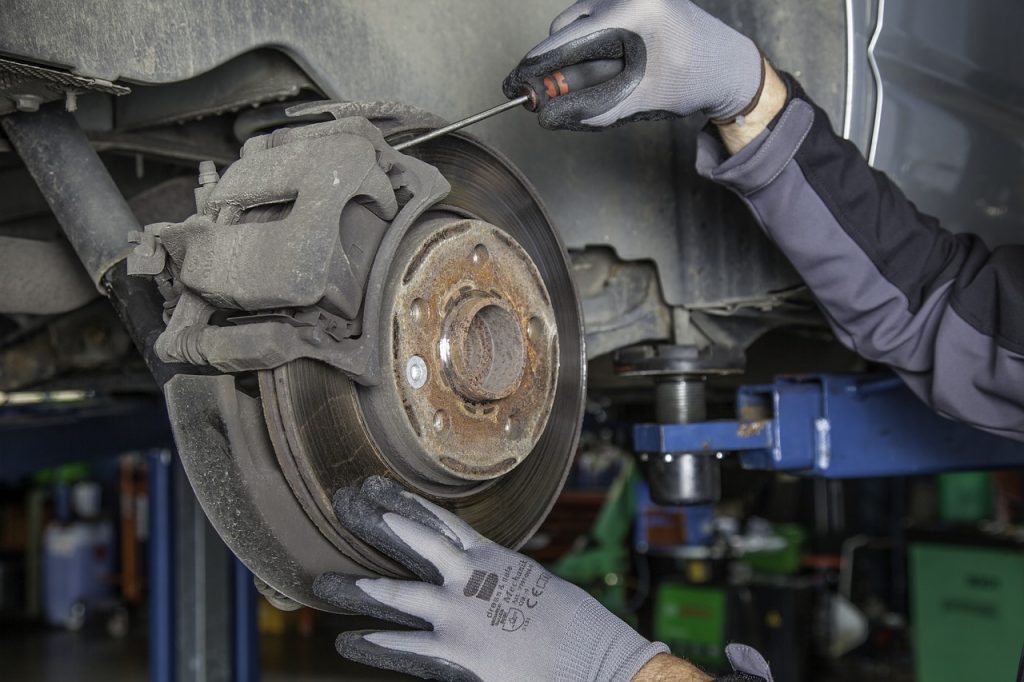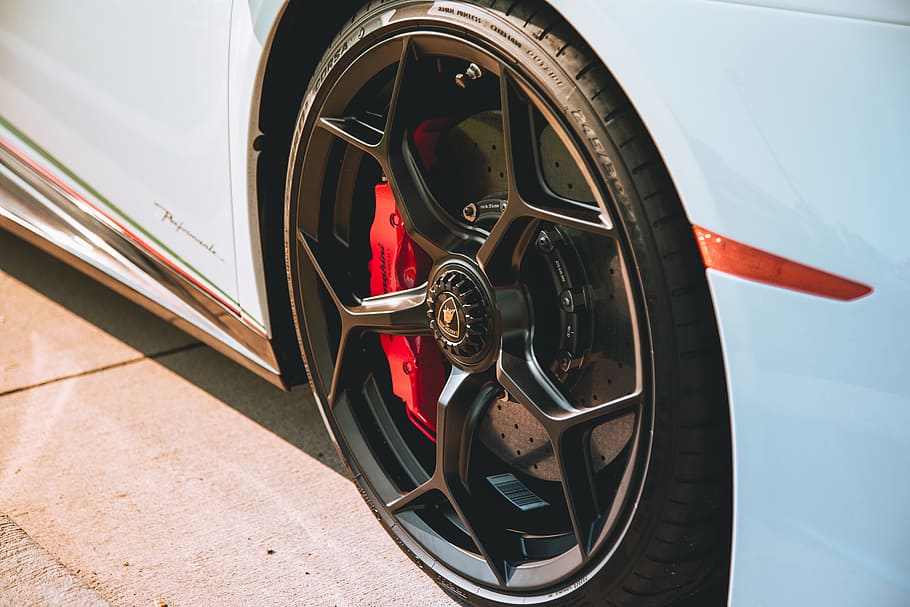Contents
– What is the service brake?
– Service brake: main malfunctions
“If you find yourself on a mountain descent, and the brakes are not obeying, you have a lot to worry about: explanations below.
What is the service brake?
The braking system allows you to slow down or stop when your vehicle is in motion.
The basic principle is to transform the vehicle’s kinetic energy into calorific energy (that’s why the brakes heat up during braking).
Brake control
This assembly includes:
– The brake pedal: extends the action of the driver.
– The master cylinder: activated by the pedal, it transmits pressure in the hydraulic circuit to the wheels.
– The brake pipes: they allow the connection with the wheels.
Front and rear brakes of the service brake
They are made up of:
– Brake callipers: they are made up of a body enclosing one or more pistons receiving the hydraulic pressure;
– Brake discs: these are solid or ventilated discs made of mild steel (they may be made of carbon on prestige and competition vehicles);
– Brake pads: they are activated by the brake piston(s) and pinch the disc.
2 possibilities of assembly exist:
– Drum brakes: long used for rear brakes, they are increasingly rare, they are composed of:
◦ wheel cylinders: 1 or 2 per wheel, they receive the braking pressure and consist of 2 pistons;
◦ of brake shoes: they are metal parts covered with friction linings; the wheel cylinders operate them;
◦ of drums: these are grey cast iron parts integral with the wheels, inside which are cylinders and shoes; when braking, the shoes come to rest on the drums to slow down the wheels’ speed.
– Disc brakes: once reserved for high-end or sporty vehicles, disc brakes are becoming more common at the rear.
Service brake: main malfunctions
They can be due to a lack of maintenance: indeed, the pads, discs and shoes for drum brakes are wearing parts and must be replaced periodically.
Here are the most common malfunctions:
– Braking noises: the brake pads or shoes are worn, and their metal parts rub on the discs or drums.
– The brake pedal goes to the floor: a hydraulic fluid leak has occurred either externally (pipes – hoses – wheel cylinders) or internally (master – cylinder).
– The pedal is hard and requires a great effort to brake: the brake assist is defective.
– Vibrations during braking: the discs are warped or cracked.
– Strong smell of burning (in neutral, the vehicle does not move forward or opposes resistance to progress): one or more callipers are seized and cause the heating of the pads, discs and brake fluid. Often, there is then an imbalance in braking more or less critical.

All these situations require immediate repair of the braking system and are all subject to refusal at the technical inspection.
Please note: if the service brake fails, the only alternative is the emergency brake (hand brake) and, besides, the engine brake (which must be used on long, steep descents to assist the service brake and prevent it from overheating).
Hope this post has helped you understand the importance of the service break. Should you wish to read on a more specific topic in the automotive industry, please jot down your request below, and we will get back to you soon. Also, remember to share your experience with us.
You can read other interesting posts here:


1 comment
[…] Cars and Motors Online: What Is the Service Brake? […]